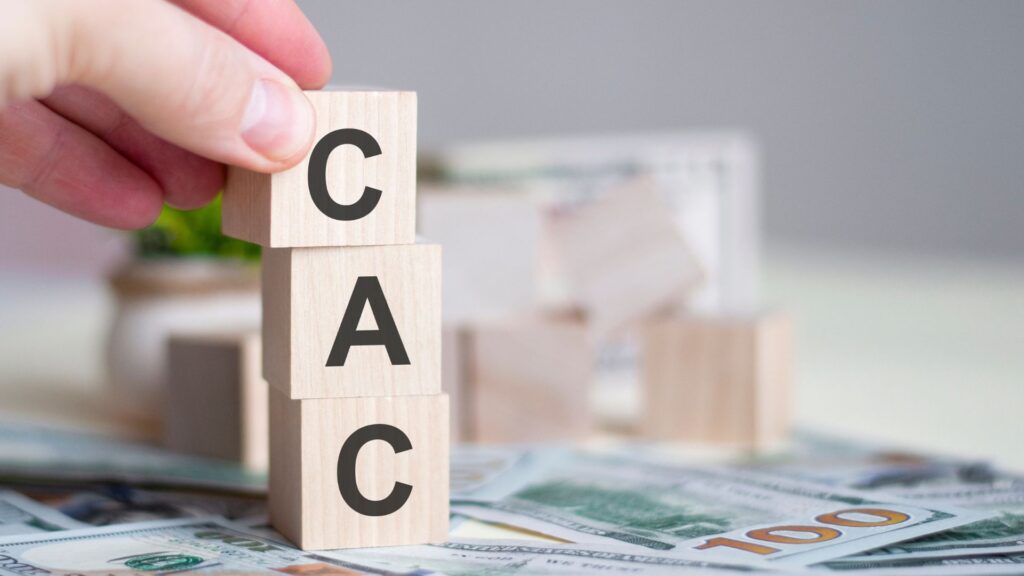
Your customer acquisition cost (CAC) is a critical business metric. If it gets too high, you don’t turn a profit, so it’s always a goal to minimize these costs while also maximizing the positive impact your processes and efforts have on leads and current users.
Learn more about how to improve customer acquisition costs, or CAC, below. We dive deep into nine proven methods for controlling those costs without negatively impacting the growth of your Software as a Service (SaaS) company or product.
1. Utilize a Product-Led Strategy
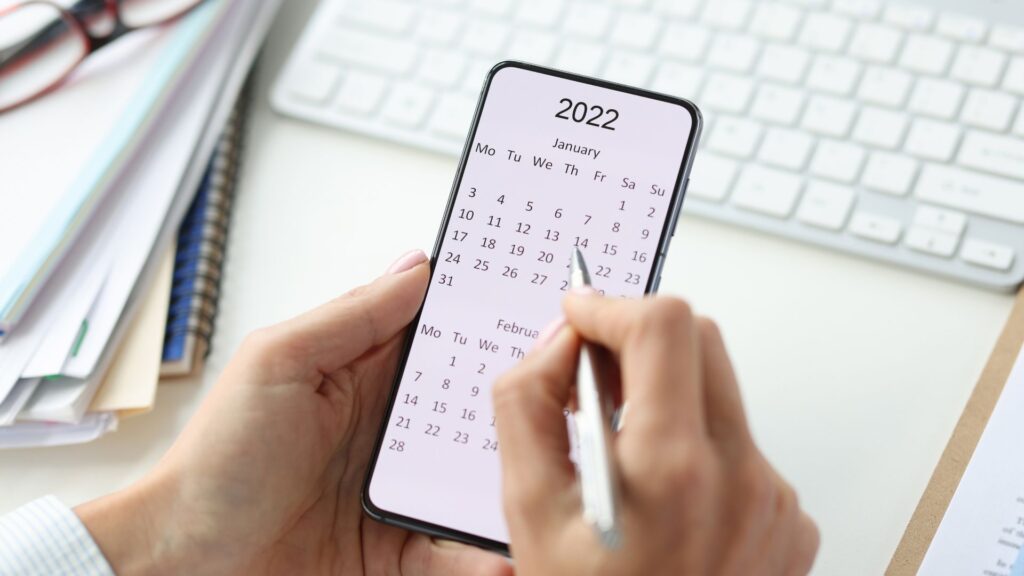
Product-led customer acquisition strategies prioritize the product within the customer journey. Instead of relying on branding and clever marketing, product-led strategies rely on the features and benefits of the product — and how they meet the needs of your customer base. The product itself handles the heavy lifting when it comes to selling.
The benefits of this approach can include:
- Driving more qualified leads. Starting with a specific product helps you narrow your marketing approach to bring in more qualified leads. You target the people that would benefit from the features and benefits of your products instead of using a wide-net approach that brings all types of consumers into your funnel. To obtain more leads, consider leveraging mobile advertising IDs (MAIDs) to better personalize specific user profiles. Better quality leads reduce the wasted effort in your sales processes, which in turn drives down CAC.
- Bringing in revenue from existing users. Strategies that concentrate on the product increase the positive value of the target customer’s experience. That leads to existing users spending more. They may purchase premium versions of the product, invest in more licenses, renew subscriptions, or buy other products.
- Bringing in revenue from existing users. Strategies that concentrate on the product increase the positive value of the target customer’s experience. That leads to existing users spending more. They may purchase premium versions of the product, invest in more licenses, renew subscriptions, or buy other products.
- Reducing marketing costs and acquisition reliance. Product-led strategies reduce marketing costs for the reasons given above and also because you don’t have to start from scratch. Your marketing strategy and tailored messages are directed by your product, which can make the process easier and less costly. And when the product supports longer and more profitable customer lifetime values, you don’t rely as much on acquisitions to feed revenue.
Example of a Product-Led Strategy
One example of a product-led strategy can be seen with Calendly. This scheduling platform makes it easy for people to schedule time with each other without working through back-and-forth calls and emails. Potential clients, business partners or even family and friends can click on your Calendly link, find an open spot on the schedule and book it. Something that used to take administrative assistants hours or days to accomplish can be done in seconds.
It’s a product that offers obvious benefits and customer satisfaction that people can see. Calendly uses that fact to promote viral growth. Once one person uses Calendly and invites others to find a meeting time with it, those other people see the value. Many of them also become Calendly users because the ease of scheduling is too good to pass up.
2. Understand Critical CAC Assumptions

You can’t manage CAC properly if you can’t calculate it correctly. Understanding the underlying assumptions helps you more accurately calculate it. You need to ask questions about what is most valuable to your business and how acquisitions support that.
You can also learn more about the technical details regarding how to calculate CAC in our article on the topic.
Here are a few assumptions you should consider and define before trying to calculate or reduce customer acquisition costs.
What Is the Outcome Measured?
It’s important to ensure that you measure the right outcome so you can know whether your results are succeeding. When you measure the wrong outcome, you can misunderstand performance or make poor business decisions that don’t actually move the needle on growth.
Some options include:
- CAC, which is the total cost to acquire every customer. It’s usually represented as an average by taking all of your costs and dividing that by the number of acquired customers. For example, if you spent $10,000 in three months and gained 1,000 customers, your average is $100.
- CPA, which is the cost per action. For example, a project management software company like Asana might consider the cost per user onboarding, while a video conferencing software like Zoom may use the cost per meeting held. This metric helps evaluate the performance of various factors, such as how well the platform drives user adoption for Asana or how well the video and audio quality performs in terms of the cost per meeting held for Zoom.
- CPL, which is cost per lead. This refers to the average cost it takes to generate a lead. CPL can help you understand the productivity of your marketing efforts, though you need to consider whether the leads are high quality and convert well too.
What Costs Are Included?
You can calculate customer acquisition using a variety of methods, including but not limited to:
- Fully loaded, which is a big-picture method that lets you budget marketing expenses and sales efforts overall. It takes into account all costs across all channels for all acquisitions.
- Channel, which only considers the costs and acquisitions associated with a specific channel. This can be a good way to look at the efficiency of each channel, but it can be difficult to accurately allocate costs and acquisitions to a single channel in some cases.
- Marginal, which looks at the spend between channels. This is another way to understand which channels are performing best and which aren’t.
- Segmented, which looks at costs by segment. You can use this tactic to understand whether you should invest in high-interest segments based on the ROI in those areas.
What Is the Time Duration?

In many cases, your investment in lead generation doesn’t pan out immediately. So, it’s important to consider the average time it takes a lead to convert to a customer. If you don’t factor this in, you can draw some false conclusions about your SaaS and payback period.
Example of the Impacts of These Assumptions
Consider Slack. What if the product and marketing team only considered CPL? This is the cost to get someone to sign up for a Slack account.
What if the CPL was an astounding 10 cents per lead? That would be cause for celebration and a round of bonuses for the marketing team, right? A CPL approaching zero must mean success…
Except that’s not true, because CPL is the wrong measurement for Slack. You could have thousands of cheap leads signing up for the service and never using it to collaborate with their team, which means the product is ultimately unsuccessful. Better measures for Slack are cost per action (in the case of users who upgrade to a paid plan or invite more team members to join) and cost per acquisition (in the case of new organizations that sign up to use Slack). These metrics help evaluate the success of the product and the overall health of the business.
3. Deeply Analyze Your Data
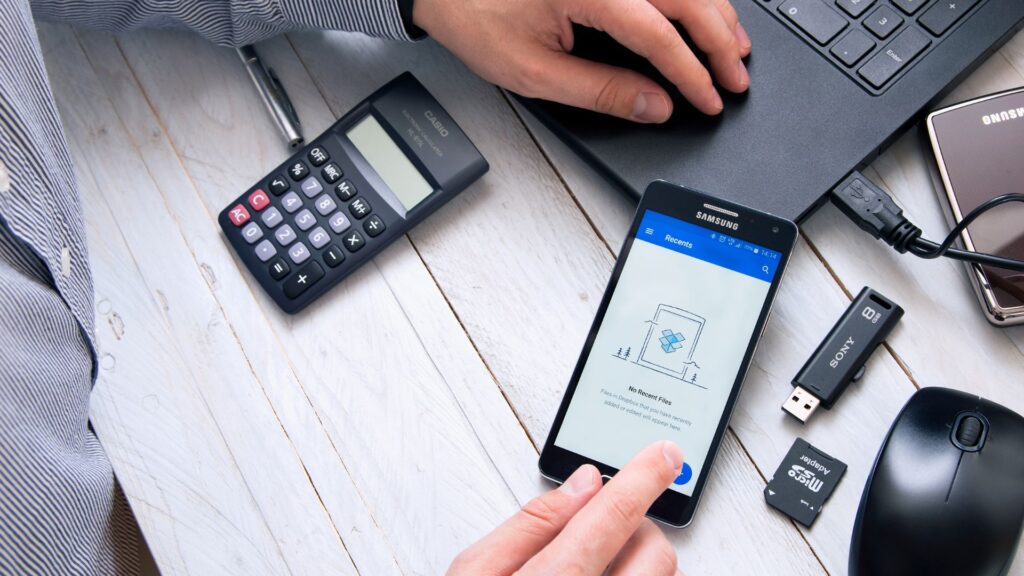
If you want to know how to improve CAC for your product or business, the best place to start is with your data. By diving deep into your data, you can gain a better understanding into:
- What products, features and benefits resonate with your users and drive lower CAC and greater revenue
- Which strategies are driving more and better quality leads
- What strategies lead to more acquisitions
- What strategies are not performing and may need to be eliminated
Regularly looking at data with these questions and considerations in mind helps you make changes that cause CAC to evolve and decrease over time.
Example of Data Analysis for Cost Efficiency
Dropbox has always put a strong emphasis on cost efficiency. In its early years, Dropbox achieved massive growth by utilizing a referral program that offered free storage space to both the referrer and the person referred. This program helped Dropbox acquire millions of users without having to spend a lot on advertising. However, as the company grew, it became necessary to analyze its data to determine which strategies were still effective at driving user acquisition and which were not. Through careful analysis, Dropbox found that while the referral program was still effective, it was no longer the most cost-efficient way to acquire users. Instead, the company shifted its focus to targeted advertising and optimizing its website for conversion. By continuously analyzing its data, Dropbox was able to drive sustainable growth.
4. Retargeting

One great way to lower CAC is to ensure you are reaching out to the right potential customers. You also don’t want to waste effort, so if you do the work to successfully attract a lead, you want to follow up to support a better chance at conversion.
Retargeting is the act of presenting your product or offer in front of people who have already shown an interest. You can do this with paid media, including search and display ads. It’s often more cost-effective to use these channels to retarget (because you know you’re spending on quality leads) rather than to generically pepper ads across Google, Facebook, and other platforms just to generate leads.
Example of Retargeting
Streaming services offer some great examples for how you can use retargeting to reduce the cost of acquisition and enhance customer lifetime values. Here are some examples of how these services use retargeting:
- To encourage more hours of streaming. The North Star metric for Netflix is hours watched. Streaming services leverage what they know about viewers’ watch habits and preferences to present targeted ads, often on social media, for shows that the users haven’t watched but might enjoy. This prompts users to log back in and watch more.
- To keep people subscribing. If you don’t log into a streaming service for a while and see that you’re being charged for a monthly subscription, you might be tempted to cancel it and save money. But if you’ve recently seen an ad for a show you want to watch on that service, you are less likely to cancel it.
- To get people to resubscribe. Streaming services may combine data about user preferences with unsubscriber lists to target people who have left the platform with ads for shows that entice them back.
Retargeting campaigns can be extremely lucrative because they increase the lifetime value of a customer and don’t cost a great deal. You can even get started on platforms such as Facebook with only $10 or so in initial investment to test the waters.
5. Leverage Automation at Scale

When you improve operational efficiency in your marketing and sales processes, you also reduce CAC. One of the best ways to do this is to use automation, especially when you can do so at scale to support larger processes and growth.
Automation reduces labor costs by taking the burden of menial, tedious and repetitive tasks off of your team. This can reduce the number of hours necessary to accomplish the same goals. It also frees your team up to work on more complex tasks or create effective strategies for growth.
The cost of investing in automation can be large at first. However, you should consider the long-term ramifications of how automation makes your processes more efficient and cost-effective. Automation also makes it possible to enjoy economies of scale, which are critical when you’re trying to build success through growth loops.
Example of Scalable Automation
Email marketing is a great opportunity for this type of automation. You can easily use numerous products to automate email campaigns for situations that include:
- Engaging leads. If someone signs up for a newsletter or more information, you can launch an automatic drip campaign to begin the process of engaging them. Dynamic email marketing tools make it possible to customize and personalize those automated emails for the utmost impact.
- Re-engaging users. Automated emails can kick off when someone hasn’t logged into a product for awhile, is about to let their subscription expire, or hasn’t upgraded yet.
- Building brand loyalty. You can use email automation to provide consistent value and support for existing users.
- Supporting growth loops. Email automations, along with other automations, can make it easy for users to support growth loops by referring or inviting others.
If you’re not automating these types of emails, your staff is sending them manually. Even if it only takes 10 minutes to send an email, automating 1,000 emails a month provides a labor savings of 166 hours. That’s thousands of dollars in labor costs saved in a month.
6. A/B Test Your Landing Pages
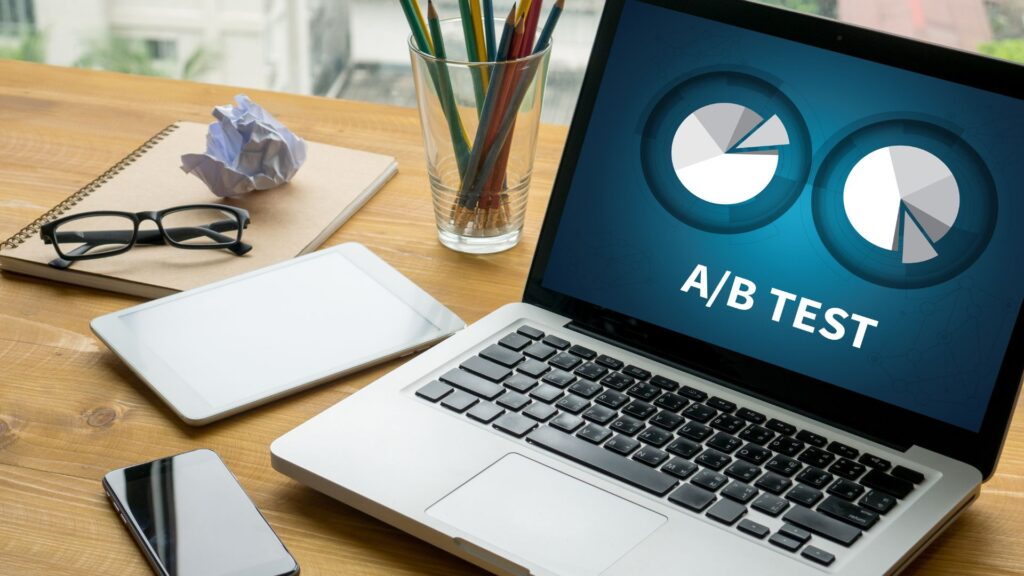
Overall user experience is a huge factor in whether or not your landing pages convert people. Something as simple as how fast a page loads can make or break conversions. According to Google, if a page takes three seconds to load instead of just one second, bounce rates increase by 32%, for example.
Other user experience factors can have an impact too, including:
- The color of the background, images, text or buttons on the page
- The location of various elements, especially CTA buttons
- The amount of white space on the page
- The accessibility of the page
- The text used in any CTAs
- The headline and subheads on the page
- Where links are located and the anchor text used
- How many words are on the page
- The formatting of text
While there are best practices for many of these things, there aren’t hard-and-fast rules for what is going to work for every audience. You must figure out what your target audience wants in the way of user experience. The way you do that is through A/B testing.
A/B testing is performed by taking two versions of the same thing — in this case, your landing page — and testing small tweaks against each other. For example, you might only change the background color of a page and see which background performs. Then you might change the title or the location of the CTA button to find out which one works best.
The goal of A/B testing is to continuously improve something by making small, deliberate changes.
Example of the Impact of Your Landing Pages
For example, you might run an A/B test to see where best to place a CTA button. In one version of the landing page, the button is at the bottom. In another, buttons exist at the bottom and above the fold so users can click without having to scroll.
You could find that the additional CTA button increases conversion rates by 10%. The work required to make that CTA button change is minimal, so you can see how small changes through A/B testing can lead to big value — and help reduce your overall CAC.
7. Optimize Retention Strategies
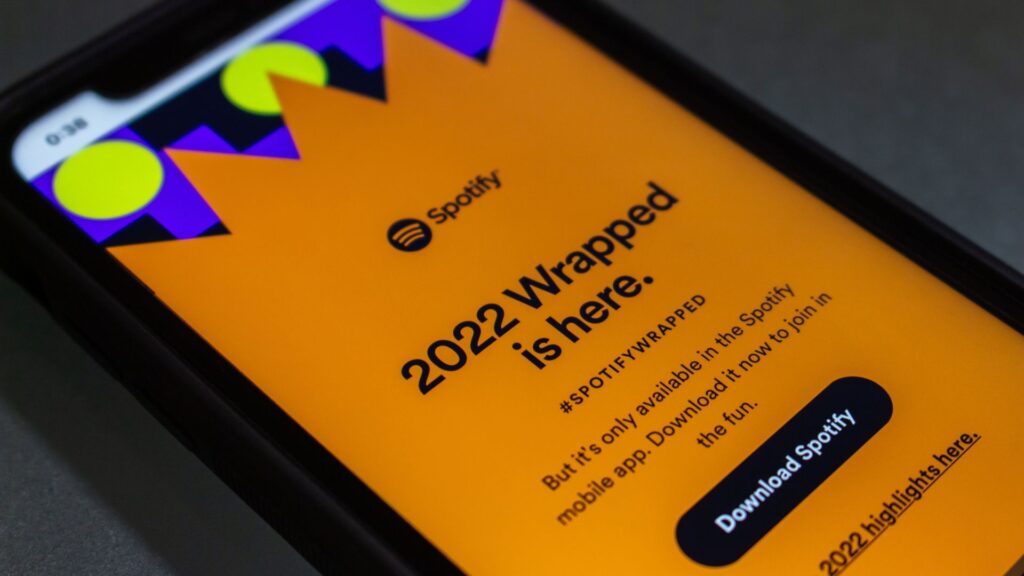
Customer retention issues are bad for CAC. If you lose a customer for each one you gain, for example, you’re simply spinning your wheels and driving up costs. So, you have to pay attention to customer retention and acquisition as if they were two sides of the same coin.
Prioritizing retention efforts supports benefits including:
- Increasing customer lifetime value. Users that stay with you longer are generally more valuable. They spend more and positively impact your long-term revenue.
- Building growth loops. When users remain with you, they are more likely to create outputs that can be leveraged as inputs in your growth loop. For example, the longer someone is a Spotify user, the more likely they are to make collaborative playlists or share songs with others. The more that existing users share about the product, the more other people are made aware of the music streaming service and what they are missing by not being on it. That can lead to more people signing up.
- Enhancing brand reputation. When users are loyal, they’re more likely to engage in positive word-of-mouth marketing on your behalf, including referring others, recommending you to others or leaving positive reviews. This all contributes to better brand reputation and awareness in the market.
Example of Retention’s Impact on CAC
When you lose customers, you need to get more customers to replace them. That’s on top of getting more active customers in general for growth. That means ramping up efforts to expand your reach or re-engage customers who have left. All those efforts increase your costs.
If it costs $100 to acquire a customer, for example, and you want to grow by 1,000 customers a month, you’ll spend $100,000.
Now imagine that for every 10 customers you gain, you lose two. You need to acquire 20% more customers a month, which leads to a 20% increase in costs — or $20,000 in our hypothetical example.
8. Utilize the Most Cost Effective Channels for Your Product
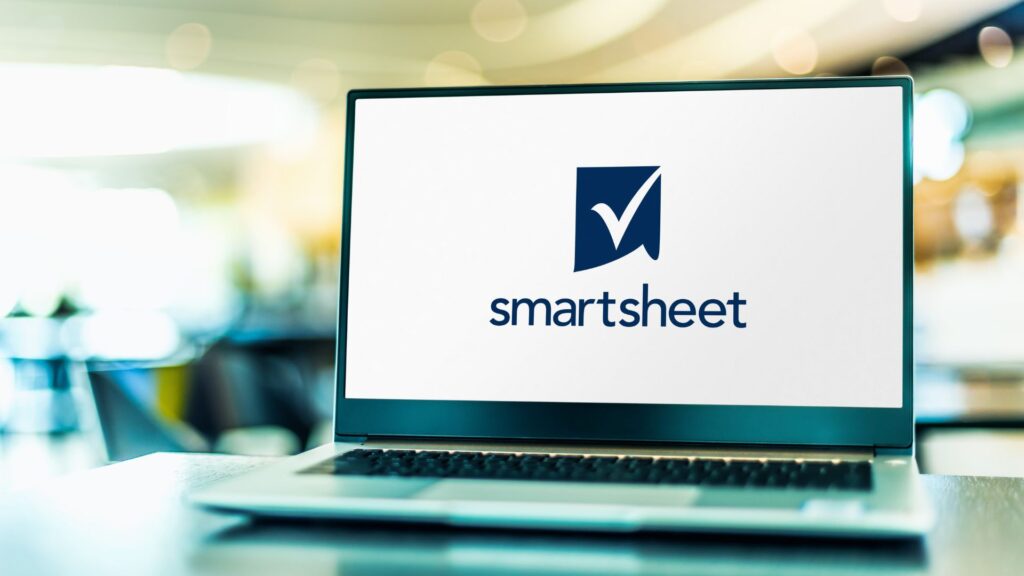
It’s important to understand customer acquisition costs for all your channels individually. Channels are not equal when it comes to performance and efficiency.
You can’t always pick the cheapest or easiest channels, because less efficient channels may bring large returns too. To succeed both in the short and long term, it’s vital to analyze data and develop a strategy that incorporates channels supporting growth loops for immediate gains, as well as channels ensuring stability and long-lasting outcomes.
Example of Cost-Effective Acquisition Channels
To understand how choosing (or not choosing) cost-effective acquisition channels can impact costs, consider the example of Smartsheet. This project- and task-management tool is marketed to teams and individuals and has applications that work for freelancers, SMBs and even larger organizations.
A primary acquisition channel for Smartsheet is paid advertising. It advertises via search ads, social media ads and display ads, often targeting users who have shown interest in project, time or task management. This is a very cost-effective approach for Smartsheet because it can easily target people who would be most interested in the product. Opting instead for radio ads, which wouldn’t be targeted in this way, would be much less effective and lead to a much higher CAC.
9. Work With a Product-Led Growth (PLG) Agency

Product-led growth agencies, or PLGs, are experienced in creating strategies that optimize costs and performance for SaaS companies. They can help you identify all the areas of opportunity when optimizing your CAC. They can also help you measure these costs by identifying the right metrics and putting processes in place to track the relevant data.
Example of an Expert PLG Agency
Teknicks is an experienced PLG agency. We’ve helped SaaS products — including Salesforce, Audible and Limeade — grow, and we can do the same for your product while helping you reduce and maintain acquisition costs. To find out more, schedule a free product growth strategy meeting today.